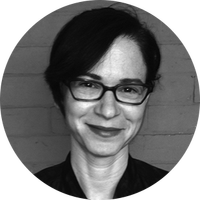7 overlooked Thanksgiving rituals, according to sociologists
Here are some surprising "rituals" from the first major sociological study of Thanksgiving


The carving of the turkey, the saying of the grace, the watching of the football. If a Martian anthropology student asked us to name some cultural rites of Thanksgiving, these would be the first few to come to mind. But students of anthropology know that a society is not always the best judge of its own customs.
The first major sociological study of Thanksgiving appeared in the Journal of Consumer Research in 1991. The authors conducted in-depth interviews with people about their experiences of the holiday. They also had 100 students take detailed fieldnotes on their Thanksgiving celebrations, supplemented by photographs. The data analysis revealed some common events in the fieldnotes that people rarely remarked on in the interviews. Here are some Thanksgiving rituals you might not realize are rituals:
1. THE GIVING OF THE JOB ADVICE
The Week
Escape your echo chamber. Get the facts behind the news, plus analysis from multiple perspectives.

Sign up for The Week's Free Newsletters
From our morning news briefing to a weekly Good News Newsletter, get the best of The Week delivered directly to your inbox.
From our morning news briefing to a weekly Good News Newsletter, get the best of The Week delivered directly to your inbox.
Teenagers are given a ritual status shift to the adult part of the family, not only through the move from the kids' table to the grownup table, but also through the career counseling spontaneously offered by aunts, uncles, and anyone else with wisdom to share.
2. THE FORGETTING OF THE INGREDIENT
Oh no! I forgot to put the evaporated milk in the pumpkin pie! As the authors of the Thanksgiving study state, "since there is no written liturgy to insure exact replication each year, sometimes things are forgotten." In the ritual pattern, the forgetting is followed by lamentation, reassurance, acceptance, and the restoration of comfortable stability. It reinforces the themes of abundance (we've got plenty even if not everything works out) and family togetherness (we can overcome obstacles).
3. THE TELLING OF DISASTER STORIES OF THANKSGIVINGS PAST
A free daily email with the biggest news stories of the day – and the best features from TheWeek.com
Remember that time we fried a turkey and burned the house down? Another way to reinforce the theme of family togetherness is to retell the stories of things that have gone wrong at Thanksgiving and then laugh about them. This ritual can turn ugly, however, if not everyone has gotten to the point where they find the disaster stories funny.
4. THE REAPPROPRIATION OF THE STORE-BOUGHT ITEMS
Transfer a store-bought pie crust to a bigger pan, filling out the extra space with pieces of another store-bought pie crust, and it's not quite so pre-manufactured anymore. Put pineapple chunks in the Jello, and it becomes something done "our way." The theme of the importance of the "homemade" emerges in the ritual of slightly changing the convenience foods to make them less convenient.
5. THE PET'S MEAL
The pet is fed special food while everyone looks on and takes photos. This ritual enacts the theme of inclusion also involved in the inviting of those with "nowhere else to go."
6. THE PUTTING AWAY OF THE LEFTOVERS
In some cultures, feasts are followed by a ritual destruction of the surplus. At Thanksgiving the Puritan value of frugality is embodied in the wrapping and packing up of all the leftovers. Even in households in which cooking from scratch is rare, the turkey carcass may be saved for soup. No such concern for waste is exhibited toward the packaging, which does not come from "a labor of love" and is simply thrown away.
7. THE WALKING
After the eating and the groaning and the belly patting, someone will suggest a walk and a group will form to take a stroll. Sometimes the walkers will simply do laps around the house, but they often head out into the world to get some air. There is usually no destination involved, just a desire to move and feel the satisfied quietness of abundance — and to make some room for dessert.
Arika Okrent is editor-at-large at TheWeek.com and a frequent contributor to Mental Floss. She is the author of In the Land of Invented Languages, a history of the attempt to build a better language. She holds a doctorate in linguistics and a first-level certification in Klingon. Follow her on Twitter.
-
 Will the mystery of MH370 be solved?
Will the mystery of MH370 be solved?Today’s Big Question New search with underwater drones could finally locate wreckage of doomed airliner
-
 The biggest astronomy stories of 2025
The biggest astronomy stories of 2025In the spotlight From moons, to comets, to pop stars in orbit
-
 Why are micro-resolutions more likely to stick?
Why are micro-resolutions more likely to stick?In the Spotlight These smaller, achievable goals could be the key to building lasting habits
